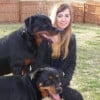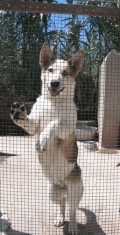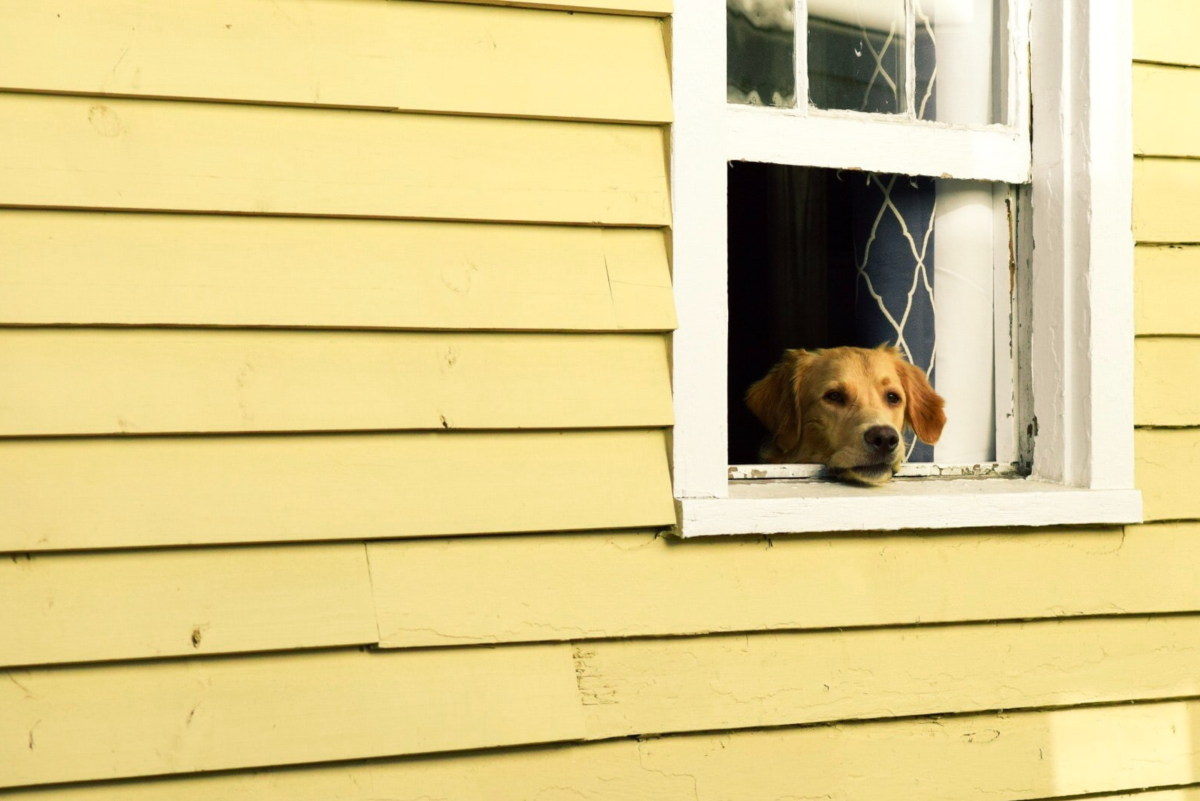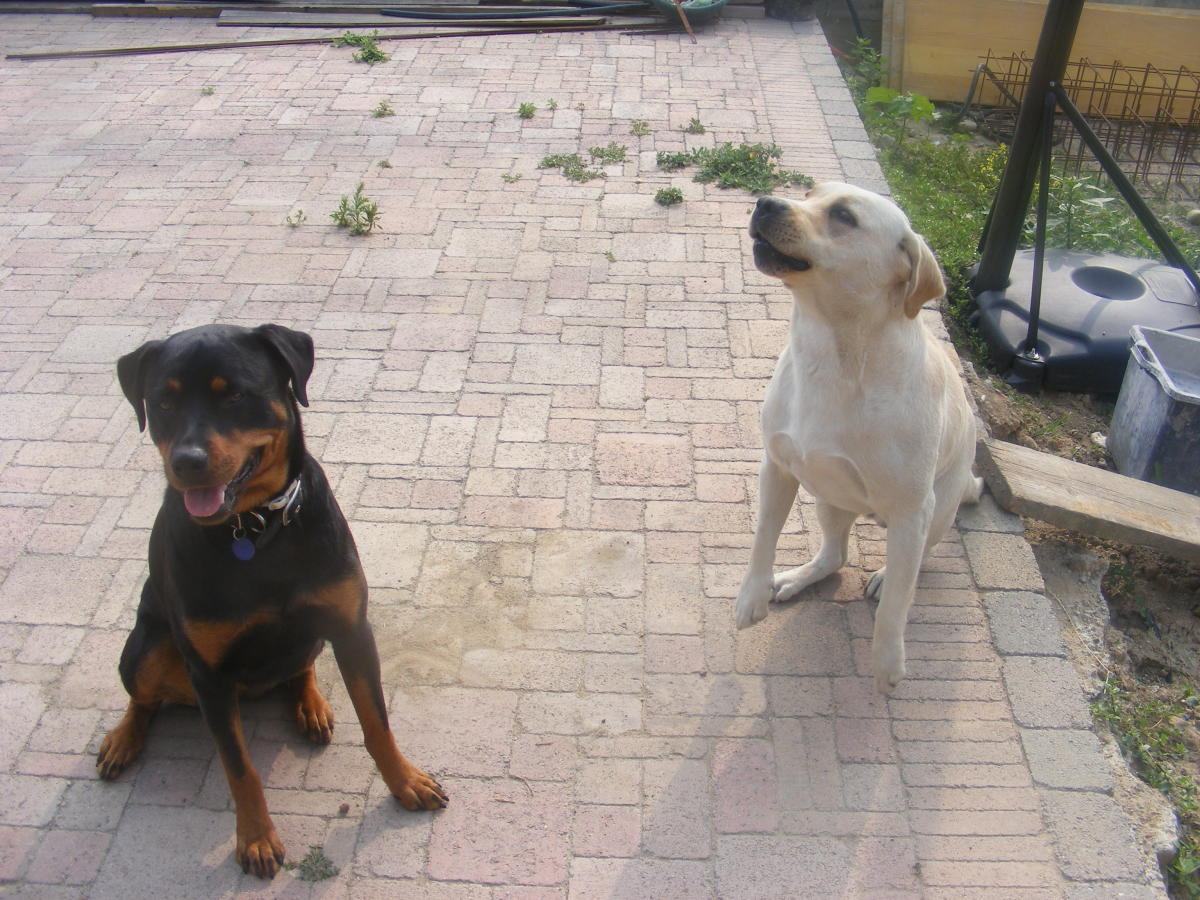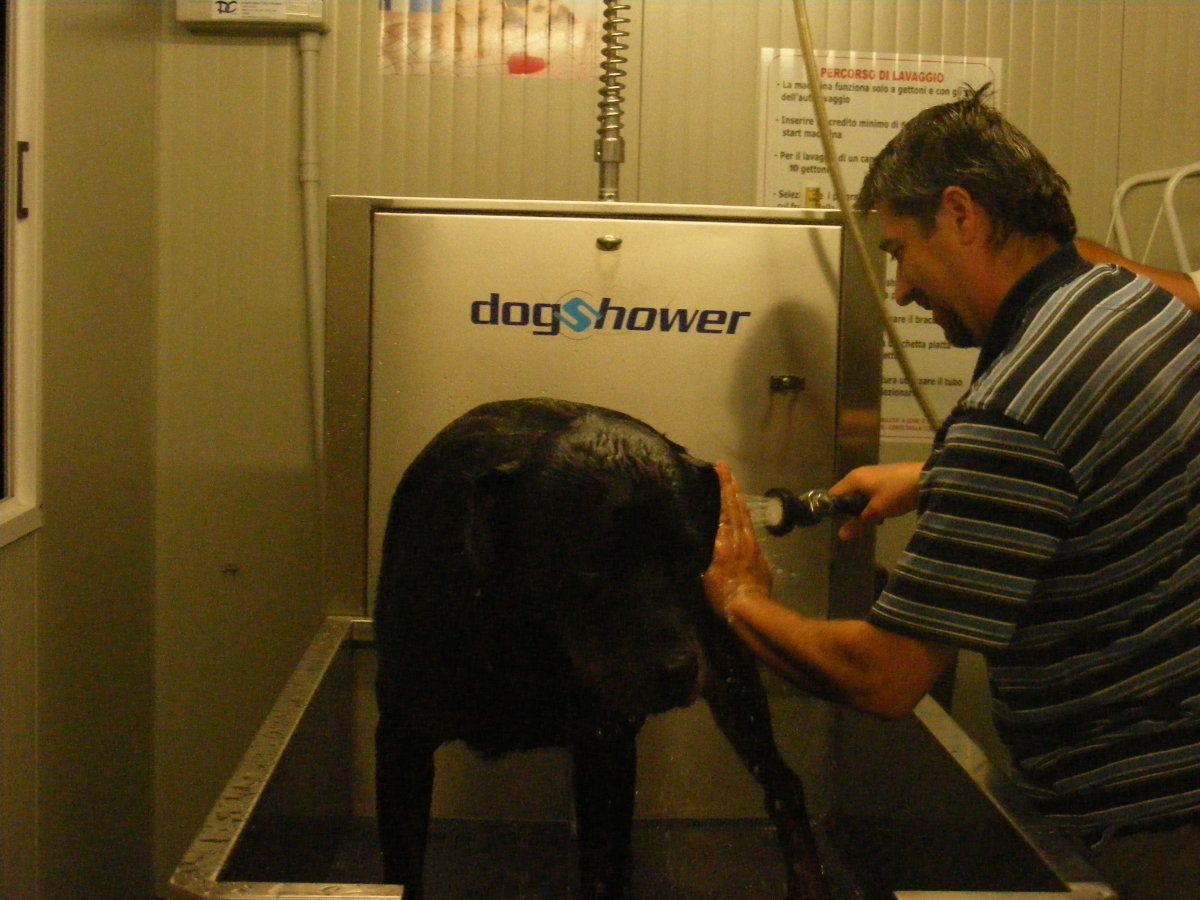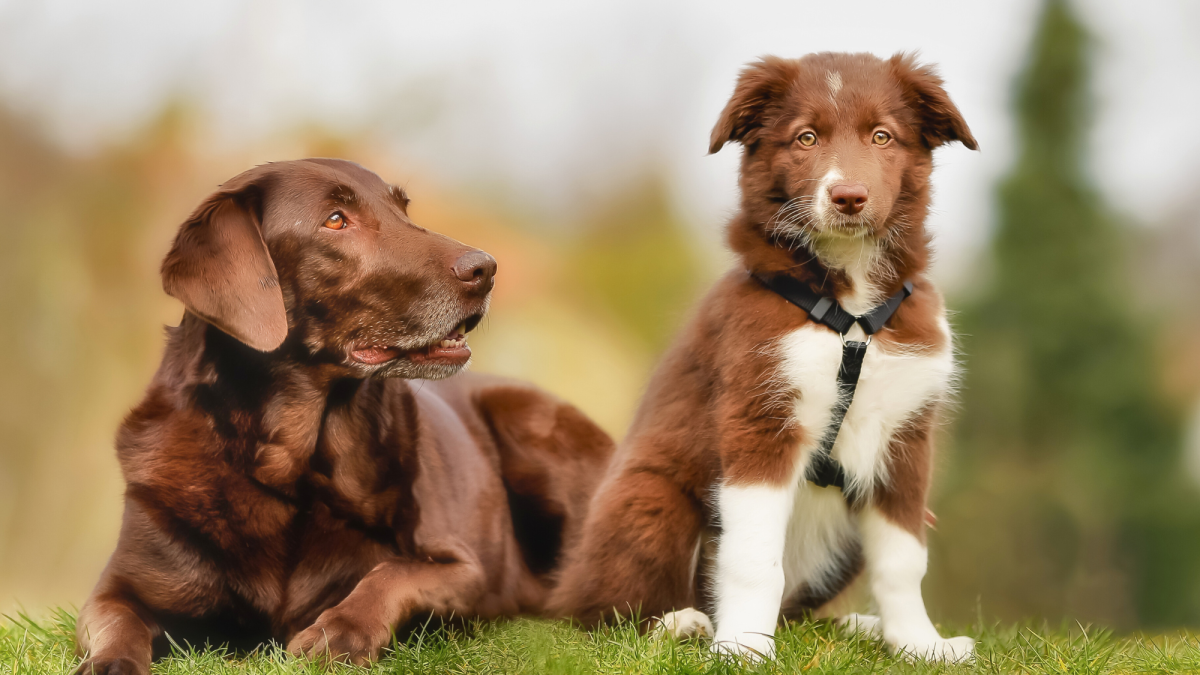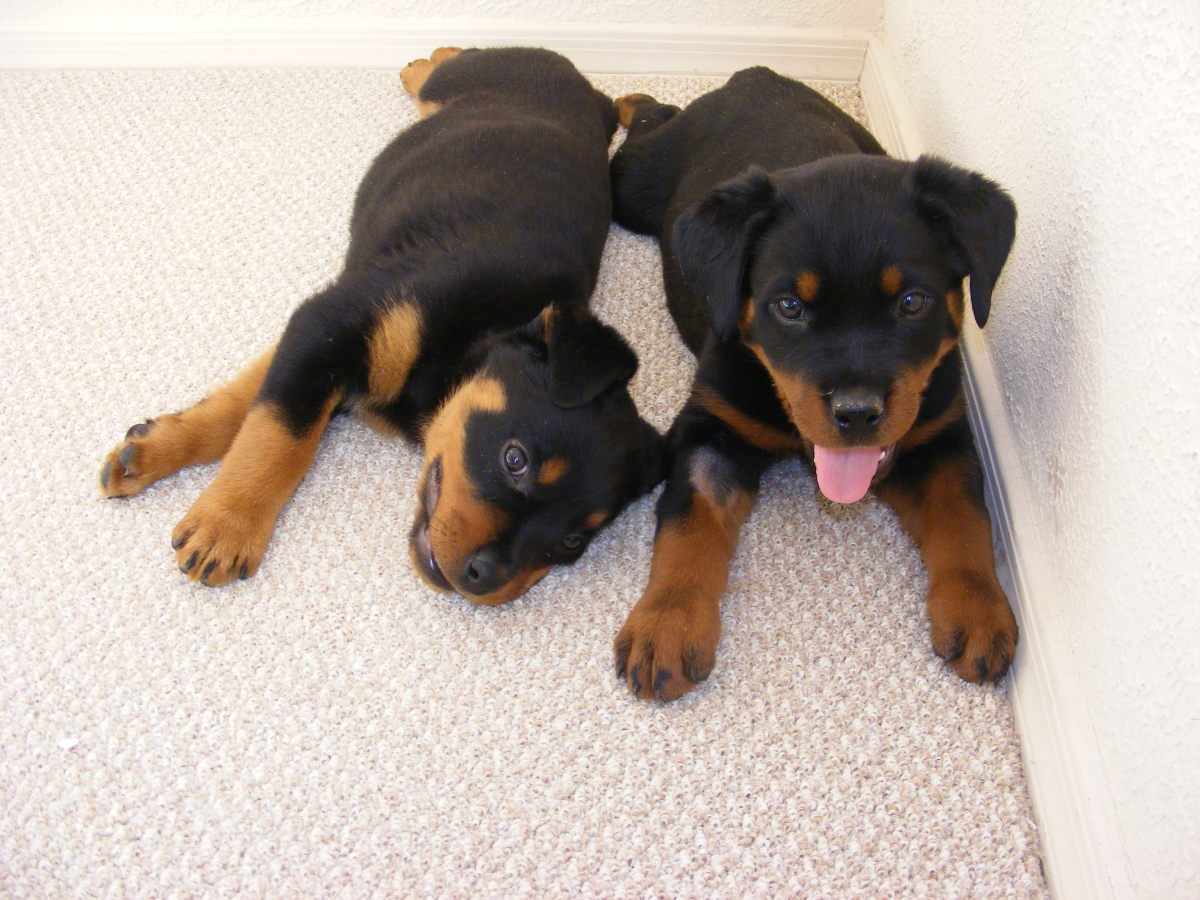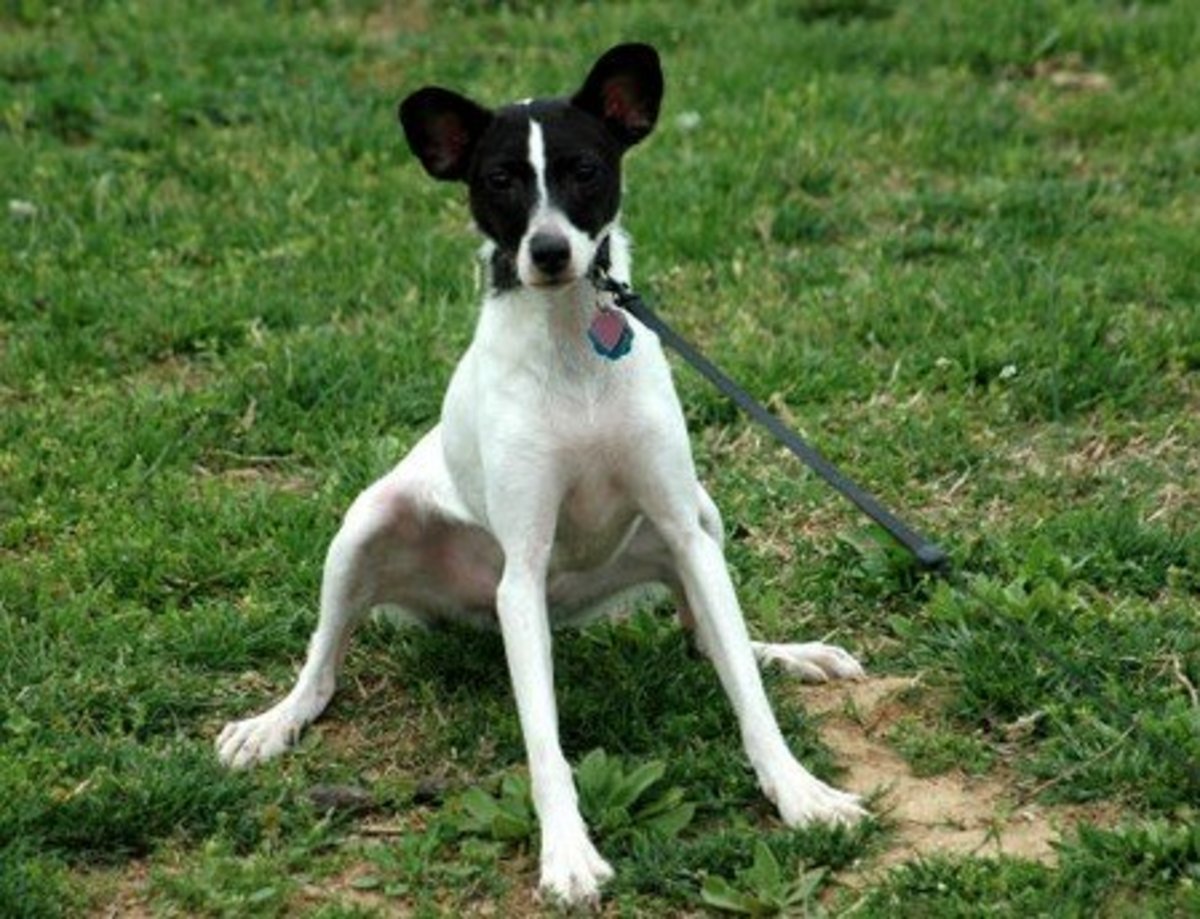Dog Behavior Modification Program Follow Ups
Behavior Modification Programs Take Time to Work

About Distance Increasing and Distance Decreasing Signals
This article is a follow up to my previous hub on how to use counter-conditioning and desensitization to help a dog who is aggressive towards other dogs. The original article on how to help a dog who is fearful-aggressive towards other dogs can be still found here.
As your dog advances in the program and gets used to associating the presence of other dogs to delectable food, a time may come where you may be eager to move on to the next step and encourage some more active and lively interactions with other dogs. As tempting as this can be, it is best to use extreme caution. While your dog may appear to have made the association that dogs bring good things, he or she may not be ready for closer interactions.
Dogs have a very strong concept of space and when interacting with other dogs, most dogs will give signals that can be divided in distance increasing and distance decreasing. In other words, dogs may give subtle or not so subtle signs that they want to get near the dog or keep the dog at a distance.
Generally, social dogs eager to meet other dogs will give distance decreasing signals, in other words they want to decrease the distance between them and the other dogs. They will therefore wag their tails, whine and even pull on the leash in a non-aggressive manner, eager to make the encounter. In these cases, there is no assurance the encounter will have a good end despite these signals. A dog may initially have a strong desire to meet the other dog but it could change its mind mid -way or once near the dog. This can be due to the other dog's disposition, the other dog may be too hyper or two assertive for the dog's taste. Or it could just be that your dog felt confident to meet one minute and then fearful the next. So it is not totally unusual for a dog to want to greet and then revert to a negative attitude.
On the other side of the spectrum are distance increasing signals, in other words signals that signal the desire to send the other dog away. If you can read your dog well, you may notice that your dog tenses up as the other dog comes close or may even bark, lunge, and growl. These are ways the dog is sending the other dog away. And if the other dog does go away, this behavior will put roots since the dog feels like it works. A behavior pattern can quickly establish and it may be difficult to eradicate.
A Few Facts About Extinction
Now, your dog may be no longer lunging, barking or growling at other dogs but this does not necessarily mean he or she is ready for other dogs to invade his/her space as of yet. Truth is, behavior modification is quite a slow process and if you go too fast you risk your dog reverting to old behavior patterns big time.
The reasons behind this is the way extinction works. Extinction is the term for the fading of behavior that was previously reinforced. In this case, the dog felt reinforced by barking/lunging/growling. The fact these aggressive displays were successful in sending other dogs away is reinforcing to the dog. The dog feels almost like it has super powers now and will bark/growl/lunge as needed.
Now, since you have been counter-conditioning and desensitizing for some time, the behavior of lunging/barking/growling at other dogs walking by may be starting to extinguish. In other words, since your dog is no longer engaging in such behaviors, he/she may be forgetting about them and unlearning them all together, just as a dog begging at the table gives up begging if no more food is supplied.
But what happens if you start giving food again to a dog begging at the table? The begging behavior will come back and become even stronger than before! Same goes with barking/lunging at other dogs. The reason for this comeback is that the dog is put on a variable schedule. In other words, since he is reinforced every now and then, the behavior is harder to extinguish just as people gambling get addicted if they win a jackpot every so often.
Of course, a time will come when the dog may be ready for more active interactions, but honestly, it is not worth the risk. Dogs do not have to necessarily be social butterflies even if we would like them to mingle with dogs at the park and have play dates. For a dog with a past of behavioral issues sometimes it is best to be satisfied with the results and admire the progress made so far. It is good enough to learn to ignore other dogs when walking on the street. This prevents potential problems of reverting to a variable schedule and going several steps back.
If socialization is very important for you, it is far better to organize an interaction with another dog you know well and not the average dog on the street. Look for a dog that has a good history of being social and a very calm specimen but consider though carefully if it is worth it: your dog can revert to its behaviors and even risk hurting/scaring/traumatizing the other dog. Hyper dogs, pushy dogs, assertive dogs is looking for trouble. For this reason, it is best to deal with a professional dog behaviorist: they often have a dog that is good in rehabilitating dogs with fear-aggression issues. These dogs are good at reading other dogs and are pros in using calming signals.
Some good reads
Behavior Modification is a Looong Process
Behavior modification takes time, it is part of rehabilitation and it tends to go slowly. Owners must realize that the at the beginning of the rehabilitation process, set backs are common. In psychology, spontaneous recovery, is the term for this. Responses to the behavior modification program will fluctuate with ups and down. Your dog may appear to be OK with dogs nearby one day, and may be reactive the next. This is a normal process initially and is often sign the program is working.
Then as the program progresses, lunging/barking/growling will decrease and the dog may almost forget all about it if you are consistent, but if you go too fast and allow other dogs to interact with your dog and your dog reacts aggressively, you know you will have lots of more to do to recover from this big set back. Not to mention the risks of getting other dogs hurt. So take it slow, watch your dog, and be happy with the progress your dog has made so far. Your dog has sure come a long way!
©All rights reserved. You are not allowed to copy this content anywhere else.
For further reading
- How to Make a Dog Food Aggressive
Yes, the title of this hub is correct. If you really are motivated you can make your dog very food aggressive without even realizing it. It is amazing the amount of people that resort to such behaviors and... - Reasons Why Dogs Growl
Your dog may growl for several reasons. He may growl at you if you get too close to his bone, if you try to move him off the couch, if you tend to abuse him, or he may growl at other dogs and people. In most cases, growling is a sign of dominance.... - How to relax anxious dogs
After working with animals for quite some years, I have learned to identify quickly dogs that are particularly tense by simply observing their body posture and facial expressions. Nervous dogs exhibit a series of signs that may not be promptly... - Warning Signs of Potentially Dangerous and Aggressiv...
Fodd Many times dogs owners are faced with behaviors from their canine friends that are a bit far from what would be expected from ''man's best friend''. Such behavior issues are often ignored or excused with...
